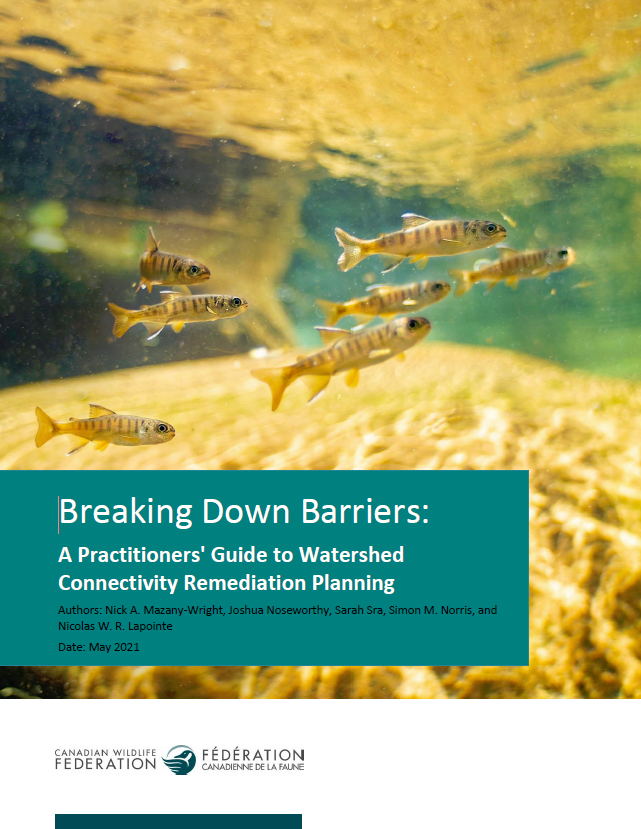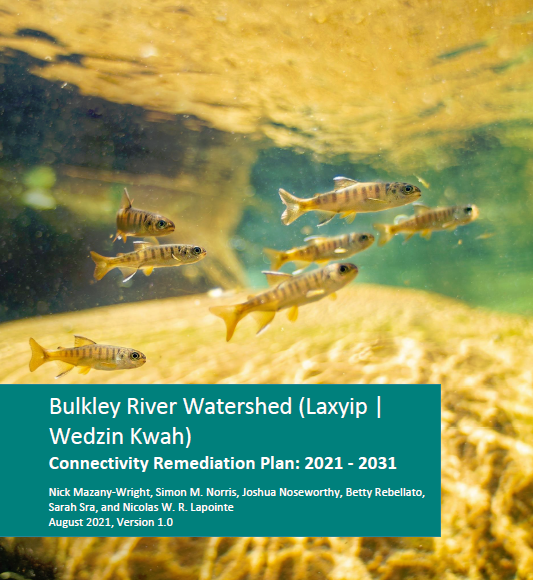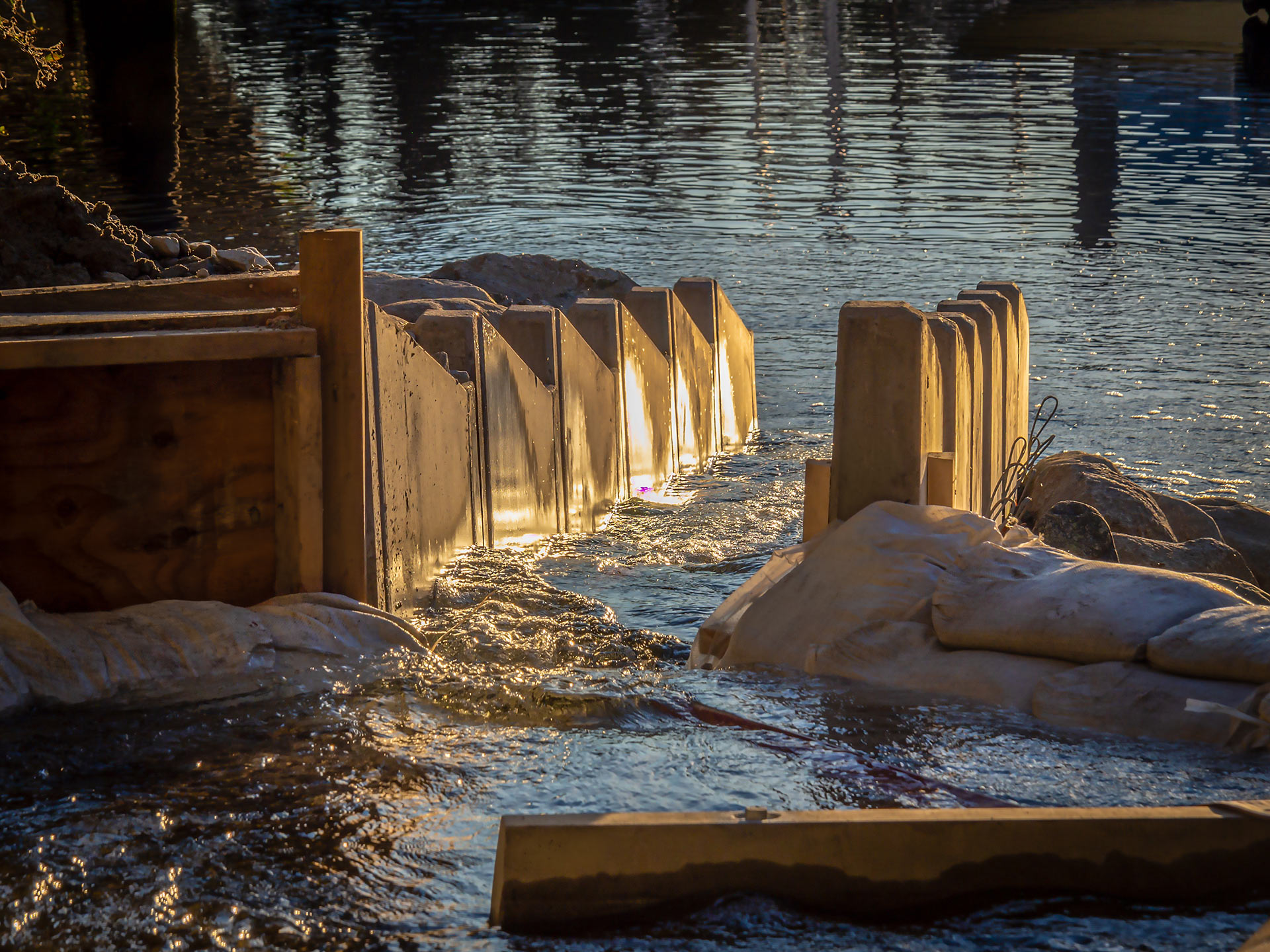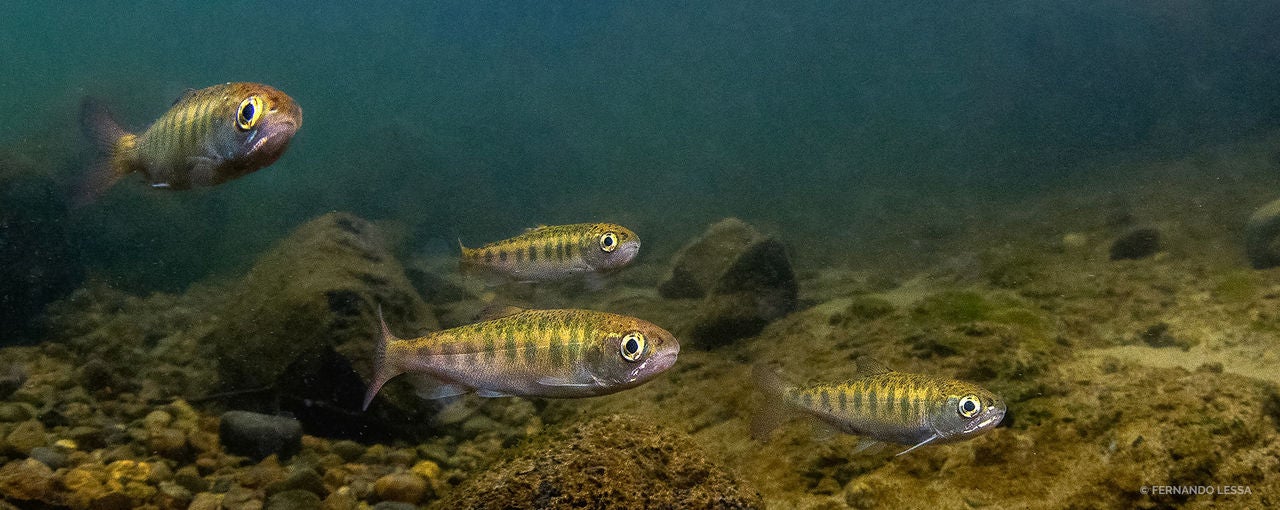Background
Human-made barriers prevent fish from accessing habitat needed for all stages of their life cycle. Fish need to access different types of habitat across seasons and life stages, and they need connected waterways to thrive. Migratory fish, including those that migrate between oceans and freshwaters (diadromous fish) and those that migrate within freshwaters (potamodromous fish), are particularly dependent on the ability to move freely through our rivers, streams and lakes.
Some of the best known examples of migratory fish include salmon, which spawn in freshwater and grow in the ocean; American Eel, which spawn in the ocean and migrate to brackish and freshwater systems to grow; and and Sturgeon, which can migrate hundreds of kilometers up rivers from lakes and estuaries to spawn. Lesser known examples include many sucker species, which migrate up small streams to spawn and are important prey for popular sport fish, and Northern Pike, which make shorter migrations into wetlands and flooded areas during spawning season.
Often when we think of barriers, we think of large hydroelectric dams, some of which have ladders designed for one or a few species to pass. But many other barriers fragment our freshwater ecosystems. These include low-head dams, road and railway crossings, and dykes and levees that block access to marshes, floodplains and other important off-channel habitats. Combined, these barriers have considerable effects on our freshwater ecosystems and the fish populations they support. They even affect other species, such as freshwater mussels that rely on fish to carry their larvae to new habitats.
The Canadian Wildlife Federation and our partners are working towards restoring the health of our freshwater ecosystems by removing barriers or modifying them so that fish and other aquatic organisms can pass. At the same time, we acknowledge that many barriers are vital parts of our society’s infrastructure and can play beneficial ecological roles, particularly in restricting the spread of aquatic invasive species. We work to identify the most important barriers to remediate and the right, cost-effective solutions for each barrier.

Program Overview
CWF’s goal is to reconnect freshwater ecosystems by remediating barriers such as rail and road crossings, weirs, levees and dams. CWF is working to improve connectivity within Canada’s waterways using two major strategies:
Work with municipal, provincial, federal and Indigenous governments, coupled with stewardship and industry groups, to secure the funding, support and technical expertise needed to implement fish passage improvement projects, starting in British Columbia and extending to our entire nation.
Identify and prioritize barriers for remediation in a national database to guide our work and the work of our partners to remediate barriers to fish movement.
In the News
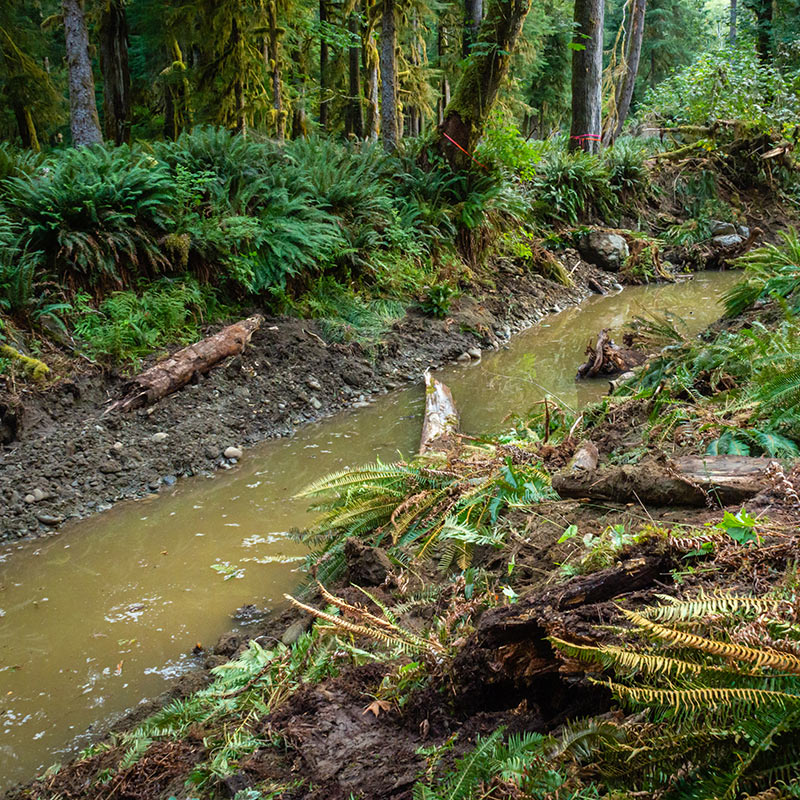
Breaking Barriers: Safe Passage for Salmon and Other Aquatic Species at Risk
In British Columbia, CWF is working in partnership with the Pacific Salmon Foundation, the B.C. Fish Passage Technical Working Group, the Pacific Streamkeepers Federation and others to implement these strategies. B.C. has demonstrated leadership in fish passage assessment and remediation. CWF’s goal is to expand the beneficial fish passage work already happening in B.C. and to apply these successful strategies to the rest of Canada. CWF is also conducting fish passage assessment and remediation work outside of B.C. through research and advocacy and by establishing partnerships to implement other pilot project opportunities.
Building a National Database for Canada’s Aquatic Barriers to Fish Passage
CWF is collaborating with all levels of government, NGOs, local and community groups, researchers and industry from coast-to-coast-to-coast to build a database of Canada’s aquatic barriers to fish passage. The Canadian Aquatic Barrier Database (CABD) and associated online tools will support decision makers from all sectors to evaluate management and restoration scenarios to improve fish passage that yield the greatest ecological value for fish populations within limited budgets.
The CABD will also form the foundation for expanding CWF’s National Fish Passage Program, an initiative focused on strategically planning fish passage improvements to help ensure access to critical spawning and rearing habitat for aquatic species across the country. This includes securing funding and providing technical expertise in fish barrier removal or remediation to allow local stewardship groups to improve fish passage within their geographical areas.

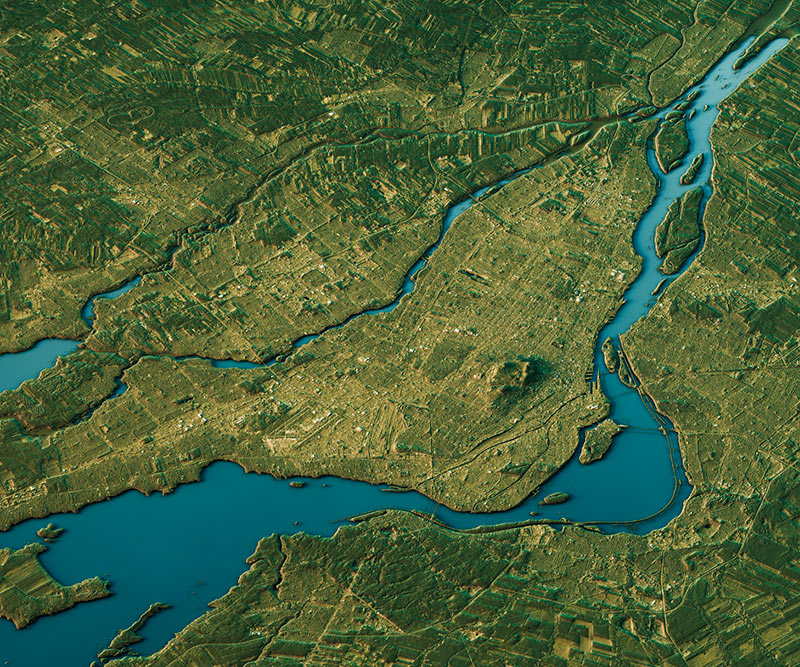
Restoring Freshwater Connectivity
The Canadian Wildlife Federation has taken a leadership role in restoring connectivity by focusing on the extent to which aquatic organisms can disperse or migrate freely through freshwater systems.
Helping the American Eels
The American Eel is a fascinating fish that is born in saltwater, and then migrates thousands of kilometres to freshwater rivers and lakes to feed and grow before returning to the sea to spawn. Today, the American Eel’s complex life cycle is threatened by overfishing, loss of access to habitat, mortality due to hydro-electric turbines, and other factors. As a result, American Eels are experiencing drastic population declines, including a decrease of more than 99% in Ontario.The Canadian Wildlife Federation is using research and advocacy to learn more about American Eel behaviour, to develop mitigation options for the species, and to increase support for protecting and recovering the species.


Helping Chinook Salmon in the Yukon
The Committee on the Status of Endangered Wildlife in Canada has completed assessment on 15 populations of Chinook Salmon in Canada and determined that 13 are Threatened or Endangered. Policy at the provincial and federal level falls short at protecting salmon runs (or migration routes) from both habitat fragmentation and over-exploitation in commercial fisheries. The Canadian Wildlife Federation is working with committed government and industry partners to improve the status of local salmon populations through research and outreach. CWF is also taking a broader-scale approach at identifying barriers to salmon migration in Canada.
Did You Know?
Native salmon species are particularly affected
Five species of Pacific salmon (Chinook, Chum, Coho, Pink and Sockeye), as well as Steelhead and east coast Atlantic Salmon, are struggling to maintain their abundance, often because of the artificial barriers they face during their crucial migration back to where they were born.
Some barriers are problems for fish migrating in both directions
Hydroelectric dams not only block upstream migration, but pose a major risk during downstream migration. Small fish need to spend more energy swimming through warm, slow-moving reservoirs where they face predation by introduced sport fish. Passing through turbines can be deadly because of strikes from turbine blades and because of rapid pressure changes faced during passage.
Blocking the way
Human-built barriers prevent adult fish from completing their return to their spawning grounds, often because dams, levees and weir barriers are too high for fish to jump over, or because road, rail and trail crossings have flow rates that are too fast for fish to swim up.
Reports and Papers
Program Lead
Nick Lapointe
Nick Lapointe works at the Canadian Wildlife Federation as the Senior Conservation Biologist – Freshwater Ecology. Originally from Ottawa, he completed his doctorate at Virginia Tech before returning home to work in conservation. Nick studies aquatic habitat, restoration and invasive species while working to protect freshwater fisheries, biodiversity and species at risk. He spends his free time fishing, hunting and foraging in Ottawa’s hinterland.
“Fish barriers like dams and dykes have been identified as a critical reason why many fish stocks are in decline,” says Nick Lapointe, CWF’s Senior Conservation Biologist for Freshwater Ecology. “It’s more important than ever that we take a good hard look at these barriers and start fixing them to allow fish to migrate freely.”
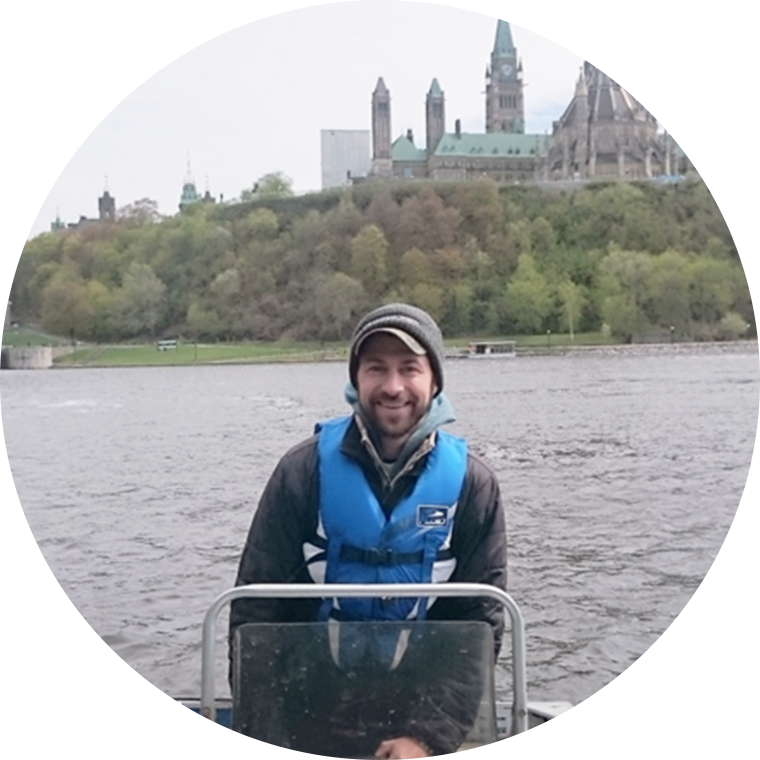
Sign Up for Timely Articles and Tips
Learn more about Canada's lakes and rivers, and the wildlife that lives there.





